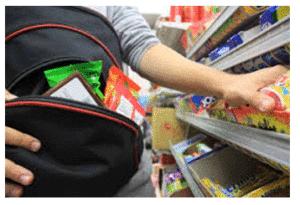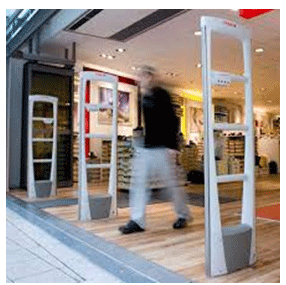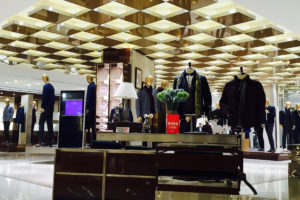 As a retailer, your holiday season has started. During this time of year, retailers big and small profit from a big and busy holiday season. With the honest shopper, this is a season that retailers look forward to. It means more sales for the retailer, and hopefully more profits as well. For every retailer, preparing and training their loss prevention personnel during this holiday season is also paramount, it can mean thousands of dollars lost to shoplifting if personnel are not properly in place, or trained. Knowing what items are most likely to be stolen can help your loss prevention team take preventive measures to ensure they are not easily snatched.
As a retailer, your holiday season has started. During this time of year, retailers big and small profit from a big and busy holiday season. With the honest shopper, this is a season that retailers look forward to. It means more sales for the retailer, and hopefully more profits as well. For every retailer, preparing and training their loss prevention personnel during this holiday season is also paramount, it can mean thousands of dollars lost to shoplifting if personnel are not properly in place, or trained. Knowing what items are most likely to be stolen can help your loss prevention team take preventive measures to ensure they are not easily snatched.
For more about this and other topics, follow the links below.
10 Things Shoplifters Love to Steal During the Holidays
It’s a $6 billion problem for retailers.
Retailers like to call the holiday season the Super Bowl of shopping. Shoplifters feel the same way.
According to a recent forecast by Checkpoint Systems, shoplifting as a percentage of sales spikes during the holiday season as thieves (including many retail employees) gravitate to pricier items as more shoppers come into stores.
The holiday season, which kicked off last week, generates 34% of annual sales for retailers, but 37% of their annual “shrinkage,” which is inventory loss for whatever reason—from supply chain inefficiency to employee theft to shoplifting. The latter two account for the bulk of shrinkage.
Shoplifting is $6 billion problem for retailers during the holidays.
According to Ernie Deyle, author of the Checkpoint Systems report, shoplifters are more apt to rationalize their theft during the holiday season. “It’s much easier to do so when a child’s Christmas present is at stake rather than an extra bathing suit for the summer,” he wrote.
It was likely back in the teenage years and little more than a pen or something of similar value, but many people have shoplifted at least once in their life. It’s one of those crimes that, while far from victimless, is undertaken by a large swath of society because it’s seen as no big deal (which, of course it is for the shopkeeper) and can be done swiftly and spontaneously.
It’s also undertaken for various reasons, perhaps a mini act of rebellion against consumerism; or a product of self-assessed entitlement; sometimes it’s just for thrill-seeking; and for some it’s thought of as a desperate act of necessity. It’s also the subject of a new show from British artist Lucy Sparrow, a.k.a., the Queen of Felt,at London’s Lawrence Alkin Gallery. Known as Shoplifting, the show features some of the most frequently shop-stolen items in the UK, including luxury products like Chanel No. 5 perfume, Creme de la Mer moisturizer, a Chanel handbag, and a Fabergé egg—all of them crafted in felt and displayed behind glass cabinets, to entice but prevent would-be thieves.
How stores plan to fight organized retail crime during the holidays
With Halloween over, retailers are in full-fledged holiday season mode. Which means they’re gearing up for Black Friday, holiday staff schedules, stampedes of customers… and theft. That’s right — the holiday season might bring stores a nice sales bump, but it also brings an increase in shoplifting. And retailers are stepping up efforts to crack down on the crime.
We’re not just talking about customers stealing a pack gum in the checkout line. Loss prevention specialists have their eyes on a much bigger target.
Organized retail crime (ORC) is a strategic and highly sophisticated brand of shoplifting where a network of professional thieves work together to rip off retailers. According to a survey from the National Retail Federation (NRF), organized retail crime is on the rise, with 100% of retailers saying they have been a victim in the past 12 months. Furthermore, 83% said ORC activity had increased in the past year.

 Step back and take a hard look. Or better yet ask someone you trust to do that. A friend, another business owner…… they really do not need to have any special skills. You should look at your store from the prospective of the shoplifter. If you were going to steal, how would you do it? Do you have dark areas, high shelving, hidden spots that would make the thief comfortable? Is your store unkempt, dirty and not stocked in an organized way? Shoplifters are attracted to these environments. If you are presenting that look, then the shoplifter probably knows you are not able to keep up or simply do not care. This will also breed more shoplifting as word gets around that YOUR STORE is an easy mark.
Step back and take a hard look. Or better yet ask someone you trust to do that. A friend, another business owner…… they really do not need to have any special skills. You should look at your store from the prospective of the shoplifter. If you were going to steal, how would you do it? Do you have dark areas, high shelving, hidden spots that would make the thief comfortable? Is your store unkempt, dirty and not stocked in an organized way? Shoplifters are attracted to these environments. If you are presenting that look, then the shoplifter probably knows you are not able to keep up or simply do not care. This will also breed more shoplifting as word gets around that YOUR STORE is an easy mark.
 Are they asleep at the switch? Do they care? Have you trained them how you want the shoplifting deterrence program in your store to work and what their roll in it is? This is not something you can put off. It’s like saving money in an account. You got to start. If you are one of Loss Prevention Systems Customers already, then you know this. That is why we conduct live, personalized shoplifting prevention and loss prevention training for our customers.
Are they asleep at the switch? Do they care? Have you trained them how you want the shoplifting deterrence program in your store to work and what their roll in it is? This is not something you can put off. It’s like saving money in an account. You got to start. If you are one of Loss Prevention Systems Customers already, then you know this. That is why we conduct live, personalized shoplifting prevention and loss prevention training for our customers.  This is the best time for retailers. We make a good chunk of our profits during the last 3 months of our fiscal year. Walk into any major retailer right now and you’ll already see a litany of holiday themed gifts, home décor and all things red and green. We also tend to beef up our staff this time of year as well. Some of us hire part-time works, some may even add a full-time position or two and a great many of us will employ temporary workers. The threat of employee theft also peaks around this time as well.
This is the best time for retailers. We make a good chunk of our profits during the last 3 months of our fiscal year. Walk into any major retailer right now and you’ll already see a litany of holiday themed gifts, home décor and all things red and green. We also tend to beef up our staff this time of year as well. Some of us hire part-time works, some may even add a full-time position or two and a great many of us will employ temporary workers. The threat of employee theft also peaks around this time as well.  As I sit here on this Halloween night, thinking about how great it was when I was a kid to pillage the neighborhoods for candy and treats, I can’t help but also think about the next 60 days. The real fright comes now for all of us in the retail game. We’ve got so little time to do so very much. We all have new receipts pouring in, plan-o-grams that need setting, bulk stacks that need stacking and bins that need filling; all with the mad hopes of grabbing every possible dollar from now until December 24. A big part of that plan, for most, is hiring temporary help to get us through. Have you ever thought about how these temporary workers can impact your LP goals? With a little training and guidance, they can be one of your greatest holiday assets.
As I sit here on this Halloween night, thinking about how great it was when I was a kid to pillage the neighborhoods for candy and treats, I can’t help but also think about the next 60 days. The real fright comes now for all of us in the retail game. We’ve got so little time to do so very much. We all have new receipts pouring in, plan-o-grams that need setting, bulk stacks that need stacking and bins that need filling; all with the mad hopes of grabbing every possible dollar from now until December 24. A big part of that plan, for most, is hiring temporary help to get us through. Have you ever thought about how these temporary workers can impact your LP goals? With a little training and guidance, they can be one of your greatest holiday assets. Ever given any thought to your receiving area and your back door? How often do you open it and walk away? Do you require a manager be present when it’s open, or do you “trust” your warehouse crew with a key? Have you ever considered that an unattended back door could not only cause shrink, but also compromise the safety of your customer and employees? If you answered yes to any of those questions, you may have a problem.
Ever given any thought to your receiving area and your back door? How often do you open it and walk away? Do you require a manager be present when it’s open, or do you “trust” your warehouse crew with a key? Have you ever considered that an unattended back door could not only cause shrink, but also compromise the safety of your customer and employees? If you answered yes to any of those questions, you may have a problem. It is not surprising that CVS is once again the recipient of a lawsuit.
It is not surprising that CVS is once again the recipient of a lawsuit.

 A good loss prevention plan starts with focusing on the basics. One of the basics is to monitor high risk merchandise. For a variety of reasons some items are stolen more often than others. It makes sense that they should be given extra attention and protection.
A good loss prevention plan starts with focusing on the basics. One of the basics is to monitor high risk merchandise. For a variety of reasons some items are stolen more often than others. It makes sense that they should be given extra attention and protection.
